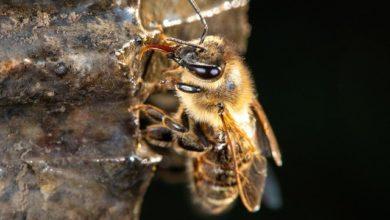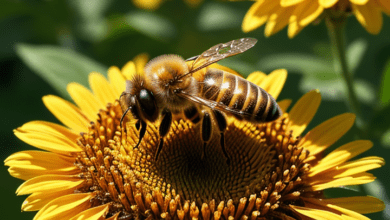Killer Honey Bees

The Menace of Killer Honey Bees
The Africanized honey bee, famously known as the Killer Honey Bee, is an aggressive and territorial species of bee that is known to attack humans and animals in great numbers. They were originally brought to Brazil in 1956 to improve the local honeybee population but escaped into the wild and began to spread across the Americas. They have since become a menacing presence in some regions, earning their infamous nickname due to their aggressive behavior.
Honey bees play a significant role in our ecosystem. They pollinate flowers and plants, which enables them to bear fruits, seeds, and nuts. Many crops rely on honey bees as a vital pollinator, including almonds, apples, blueberries, strawberries, and many more. Honey bees also produce honey, which is a natural sweetener and is used in a variety of products, such as cosmetics and medicine.
The Africanized honey bee, compared to other honey bees, tends to act more aggressively and will attack when they feel threatened. This aggressive behavior makes them a potential danger to humans and animals in the regions that they inhabit. While they have only killed a handful of people, their attack can cause severe allergic reactions and can be life-threatening to those who are susceptible.
It is essential to understand the behavior of these bees and to take the necessary precautions when living or working in areas where they are known to be present. Wearing protective clothing, avoiding loud noises or sudden movements, and seeking shelter when encountering a swarm are some of the ways to protect oneself from their attacks.
Characteristics of Killer Honey Bees
When it comes to honey bees, there’s more than meets the eye. While most honey bees are relatively harmless and keep to themselves, there’s a group of bees that are anything but. These bees are known as killer honey bees, and they have some unique physical and behavioral characteristics that set them apart from the rest.
- Physical Appearance
Killer honey bees look almost identical to regular honey bees, but there are some subtle differences that set them apart. The most obvious difference is their size – killer honey bees are slightly smaller than regular honey bees. They also have distinctive wing venation and a slightly darker coloration on their abdomens.
- Behavioral Differences
The most significant difference between killer honey bees and regular honey bees is their aggression. Killer honey bees are much more defensive than their cousins and will attack anything that they perceive as a threat. This includes humans, animals, and even other bees. They are known to swarm attackers and can deliver multiple stings, which can be fatal to those who are allergic.
- Defense Mechanisms
One of the most unusual defense mechanisms of killer honey bees is their ability to release alarm pheromones that signal to the rest of the colony that there is a threat. This pheromone can trigger an aggressive response, causing the bees to swarm in defense of their colony.
Another defensive behavior of killer honey bees is their tendency to follow attackers for long distances, continuing to attack even after the initial threat has passed. This can make them particularly dangerous to humans who are trying to escape after disturbing a hive.
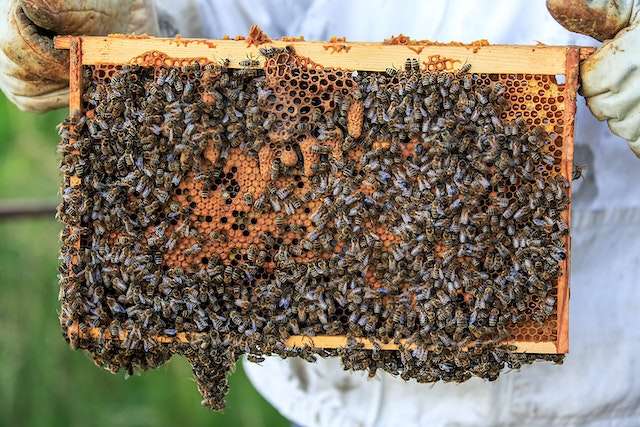
Spread and Impact of Killer Honey Bees
Their rapid spread of killer honey bees across different parts of the world has been a cause for concern due to their potential impact on local bee populations and humans.
One of the primary reasons for the spread of killer honey bees is their ability to reproduce quickly. A single colony of these bees can create up to 20 queen bees within a year, each capable of starting new colonies. Another factor contributing to their spread is their tolerance for different climates. While they originated in Africa, these bees have been able to colonize regions ranging from South and Central America to the southern United States.
The impact these bees have had on local bee populations has been significant. Due to their aggressive nature, they often compete with other bee species for resources and have been known to decimate entire colonies. Additionally, the presence of these bees has made it difficult for beekeepers to maintain their hives, leading to a decline in honey production.
The impact on humans is even greater. The stings of killer honey bees can be fatal, particularly for those who are allergic. They have been known to attack in swarms, and their stings can cause severe pain, swelling, and even organ failure. Additionally, they can be a significant threat to outdoor workers, such as farmers and landscapers, who may inadvertently disturb their hives.
The spread and impact of killer honey bees have been a cause for concern for many years. While efforts have been made to control their spread, these bees continue to pose a significant threat to both local bee populations and humans. Awareness of their presence and caution when interacting with them is crucial in minimizing their impact and preserving the safety of all.
How to Stay Safe from Killer Honey Bees
Here are some tips on how to stay safe from killer honey bees.
Avoid Provoking or Attracting Aggressive Bees
One of the best ways to stay safe from aggressive honey bees is to avoid provoking or attracting them.
Here are some things you can do to minimize your risk:
- Stay away from beehives: If you know there is a beehive nearby, it is best to avoid it altogether. Bees can perceive humans and other animals as threats and may respond aggressively.
- Wear light-colored, smooth-textured clothing: Dark or rough clothing can provoke bees because they look like natural predators. Instead, choose light-colored, smooth-textured clothing that does not resemble bees’ enemies.
- Avoid wearing perfumes and scented lotions: Bees are attracted to strong scents, so it is best to avoid wearing perfumes or scented lotions when spending time outdoors.
- Do not swat at bees: If a bee lands on you or comes near you, do not swat at it. Flailing your arms or trying to kill the bee will only provoke it and increase your chances of getting stung.
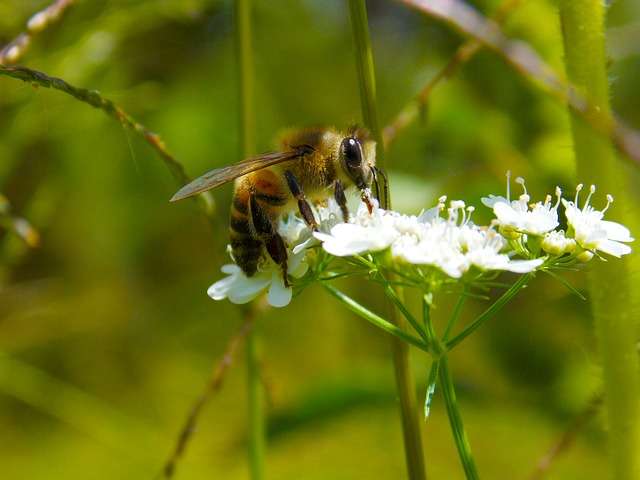
What to Do If You Encounter a Swarm of Bees
If you find yourself in a situation where you are encountering a swarm of bees, it is important to stay calm and take the following steps:
- Do not disturb the swarm: Swarms of bees are usually docile and do not pose a threat unless they are disturbed. Do not throw rocks or try to dislodge the swarm in any way.
- Move away slowly: If you are near a swarm of bees, move away slowly without making sudden movements. Bees can sense vibrations and may perceive you as a threat if you move too quickly.
- Seek shelter: If you are being swarmed by bees, seek shelter indoors or in a car. Bees cannot fly through closed windows or doors, and you will be safe until the swarm moves on.
What is Being Done to Combat Killer Honey Bees
Over the years, the Killer Honey Bee has become a serious problem in many states across America. According to experts, these bees are responsible for the death of approximately 1,000 Americans every year. To combat these killer bees, researchers and beekeepers have taken a number of steps.
Research and Efforts to Control or Eradicate Killer Honey Bee Populations
One of the most effective ways to prevent the spread of Killer Honey Bees is to control or eradicate their populations. Experts have carried out extensive research to create a better understanding of the bees and come up with strategies to control them. Several methods have been employed to control the spread of Killer Honey Bees, including:
- Bee Trapping: Beekeepers have used special traps to capture and kill Killer Honey Bees. These traps are designed to lure the bees into enclosed containers where they can be safely exterminated.
- Pesticides: Some pesticides have been developed to specifically target Killer Honey Bees. These chemicals have been used to control the population of these aggressive bees.
- Genetic Approaches: Scientists have attempted to control the bee population by genetically modifying these bees to make them less aggressive. This involves introducing new genetic material into the bees, which is then passed down to their offspring. However, this approach has not been entirely successful.
Projects to Reintroduce Less Aggressive Bee Species
Another approach to combat the problem of Killer Honey Bees is to introduce other less aggressive bee species. This approach involves breeding other bees that can act as a buffer to the invasion of Killer Bees.
For example, the Italian bee is considered to be a less aggressive bee species, and projects have been initiated to reintroduce these bees into parts of the country that have been affected by Killer Bees.
Conclusion
Africanized honey bees, more commonly referred to as “killer honey bees”, are a much more aggressive and dangerous strain of honey bee. These bees may not be very dangerous to people that carefully avoid them, but when provoked they can swarm in large numbers, causing considerable harm and even death. To stay safe, be sure to wear protective clothing, avoid loud noises and strong scents, and never approach a hive.
FAQ
What are Killer Honey Bees?
- Killer Honey Bees, also known as Africanized Honey Bees, are a hybrid of African and European honey bees. They are aggressive and have a tendency to attack in large numbers when they perceive a threat.
How do Killer Honey Bees differ from regular honey bees?
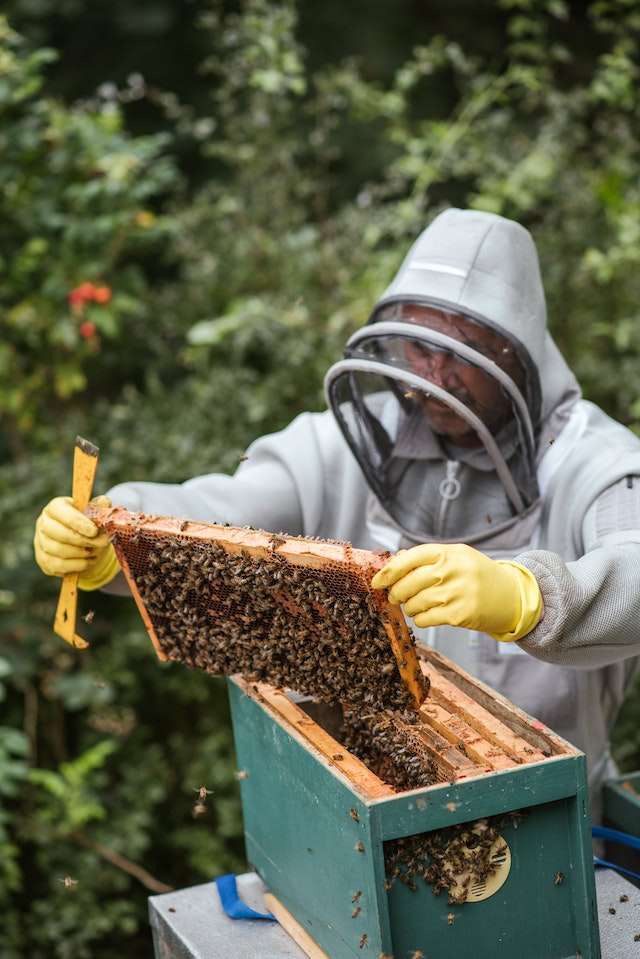
- Killer Honey Bees are more aggressive than regular honey bees and tend to swarm and attack in larger numbers. They are also more likely to defend their hives and food sources.
Are Killer Honey Bees dangerous?
- Yes, Killer Honey Bees can be dangerous. Their venom is no more toxic than that of regular honey bees, but their aggressive behavior makes them more likely to attack and sting in large numbers.
How does Killer Honey Bee control work?
- Killer Honey Bee control involves identifying and locating the hive, removing the bees, and destroying the hive. This process should only be undertaken by trained professionals.
How can I avoid attracting Killer Honey Bees?
- Killer Honey Bees are attracted to sweet smells, so avoid wearing sweet-smelling perfumes or lotions when outdoors. Keep trash cans tightly sealed, and avoid leaving food or sugary drinks outside.
Can Killer Honey Bees be domesticated?
- Killer Honey Bees are not recommended for domestication due to their aggressive behavior. However, some beekeepers have successfully bred hybrid bees that exhibit less aggressive tendencies.
How can Killer Honey Bees be distinguished from regular honey bees?
- Killer Honey Bees look very similar to regular honey bees. However, Killer Honey Bees tend to have more solid black coloration on their bodies, while regular honey bees have more yellow and brown.
Can Killer Honey Bees be eradicated?
- While it is not possible to completely eradicate Killer Honey Bees, control measures can help to keep their populations in check. Regular monitoring and control efforts are necessary to prevent infestations from becoming established.
